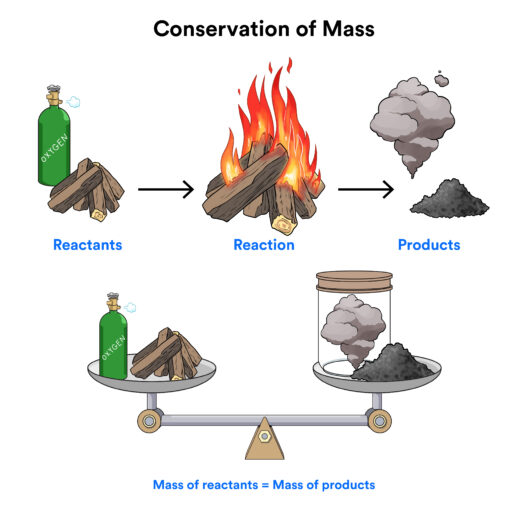Conservation of kinetic energy is a fundamental principle in physics that asserts that the total kinetic energy in a closed system remains constant, provided that no external forces perform work on it. However, this principle can be nuanced and rendered conditional by various factors, including the shifting of weights. Understanding how these forces interact requires a thorough exploration of kinetic energy, weight distribution, and the principles of motion.
At its core, kinetic energy is defined mathematically as KE = 1/2 mv2, where m represents mass and v denotes velocity. When weights shift within a system—say, in a vehicle or on a tilting surface—the velocity of individual components may change, compelling a reevaluation of total kinetic energy. This scenario evokes questions regarding the conservation principles and the conditions under which they hold true.
The Principle of Conservation of Energy
The conservation of energy forms the bedrock of classical mechanics. It posits that energy cannot be created or destroyed, but only transformed from one form to another. In isolated systems, the kinetic energy will remain constant unless altered by external forces or interactions. The implicit assumption here is that every object in the system remains in a state of equilibrium, allowing for smooth energy transitions. However, an interruption in this equilibrium—such as the shifting of weights—can disrupt energy conservation.
Analyzing Weight Shift Scenarios
When examining scenarios in which weight shifts, one must consider several variables: the mass of the object, the initial velocity, the nature of the weight distribution, and external forces acting on the system. For instance, in a roller coaster, as passengers shift from one side of the car to the other, their center of gravity alters, affecting the car’s overall momentum. If the mass distribution becomes unbalanced, the entirety of the system experiences shifts in both velocity and trajectory, thereby implicating energy redistribution.
Consider a scenario where weights are moved from one end of a beam to another. The introduction of dynamic equilibrium principles is essential here: while the center of mass shifts, the kinetic energy might still appear conserved globally, but locally, each segment of the beam experiences varying degrees of energy transformation. This situation illustrates the complexities of localized conservation laws within a broader framework.
The Role of Friction and External Resistance
Friction and other forms of resistance serve as pivotal external forces that can influence the overall conservation of kinetic energy when weights shift. When weight distribution changes, the contact area between surfaces can also alter, affecting frictional forces dramatically. Enhanced friction may result in energy dissipation as heat, undermining any claims of conservation in a practical sense.
Moreover, the potential energy stored due to elevated weight configurations also interacts with kinetic energy as the weight shifts. When a weight descends, kinetic energy transformation occurs, while ascending weights increase potential energy, highlighting the interdependence of energy forms. Consider a pendulum; as it swings, the weight shifts from potential to kinetic energy and back, embodying a continuous cycle of energy transformation that underscores conservation principles over time but remains sensitive to instantaneous weight shifts.
Mechanical Systems and Weight Redistribution
In mechanical systems, such as forklifts or cranes, weight distribution is meticulously calculated to ensure safety and efficiency. When loads are repositioned, the engineers must consider not only the immediate changes in kinetic energy but also the long-term implications for mechanical efficiency and system integrity. For example, in heavy machinery, improper weight distribution can lead to reduced kinetic energy efficiency as energy becomes trapped in suboptimal motion patterns, introducing complexities that may deviate from ideal conservation.
Sports and Human Motion
In athletic contexts, consider a sprinter’s motion. As the runner shifts their body weight from one leg to another, alterations in kinetic energy become immediately evident. The energy expended is not merely a function of speed; the athlete’s ability to effectively shift weights and maintain momentum impacts overall performance. Here, the kinetic energy embodies both the athlete’s physical capacity and the environmental interactions that may augment or reduce energy efficiency.
Conclusion: The Interplay Between Kinetic Energy and Weight Dynamics
Ultimately, the influence of shifting weights on the conservation of kinetic energy is a multifaceted topic that bridges theoretical principles and practical applications. While the overarching laws of physics remain robust, the behaviors and outcomes in dynamic situations reveal the intricate interplay between energy conservation, weight dynamics, and external forces. Understanding these relationships not only diminishes misconceptions around conservation but also enriches our knowledge in fields ranging from mechanical engineering to sports science.
In summary, while the conservation of kinetic energy typically holds in closed systems, the complexities introduced by weight shifts necessitate a more in-depth analysis. As we explore various scenarios, it becomes evident that both local and global perspectives on energy conservation are crucial for a comprehensive understanding of physical laws. It is through such insights that we can better appreciate the delicate balance of energy within our environments.







